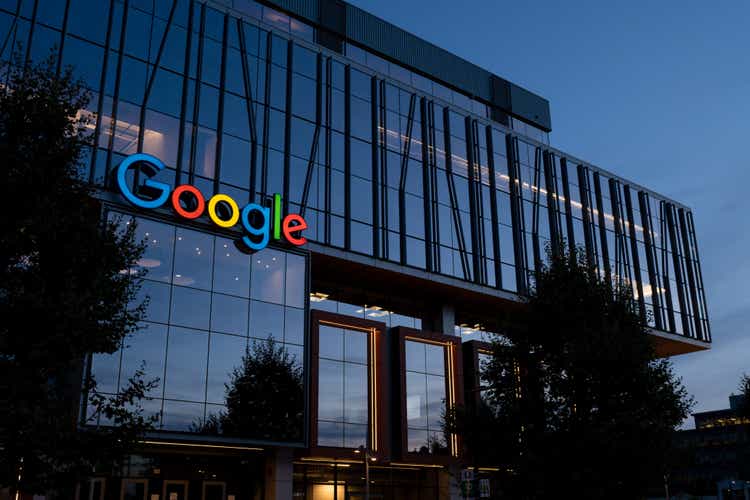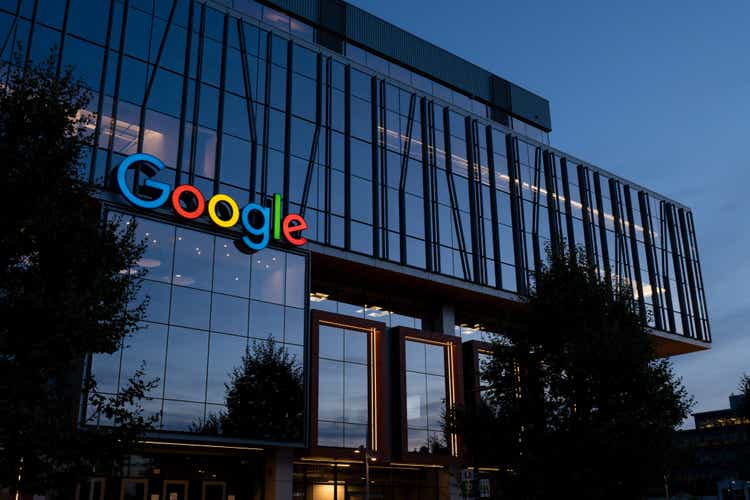
400tmax/iStock Unreleased via Getty Images
Alphabet stock remained higher after hours — (NASDAQ:GOOG) +6.1%, (NASDAQ:GOOGL) +6.5% — following an earnings conference call that took a lap celebrating stronger results while squarely focusing on the company’s No. 1 innovation priority.
CEO Sundar Pichai set the tone for the call by devoting the bulk of his commentary to artificial intelligence, arguably the biggest existential challenge for Alphabet to take on.
“This is our seventh year as an AI-first company, and we intuitively know how to incorporate AI into our products,” Pichai said.
Large language models like PaLM2 and the upcoming Gemini are set to help the company reimagine products — particularly the most important product, search, he said.
User feedback on the latest innovation — Search Generative Experience — has been “very positive” so far, Pichai said. And since a May launch, “we’ve boosted serving efficiency, reducing the time it takes to generate AI snapshots by half. We’ll deliver even faster responses over time.”
And on the revenue front: “Ads will continue to play an important role in this new search experience. Many of these new queries are inherently commercial in nature. We have more than 20 years of experience serving ads relevant to users’ commercial queries, and SGE enhances our ability to do this even better. We are testing and evolving placements and formats and giving advertisers tools to take advantage of generative AI.”
But AI is also allowing Google to help people boost creativity and productivity, he noted, pointing to Bard (the company’s experiment in conversational AI), now available in most of the world and over 40 of the most widely spoken languages. And Google’s AI approach is making innovation easier for others by offering Google Cloud infrastructure, optimized for a range of generative AI models, he said.
To take advantage of AI, Alphabet has been “sharpening our focus as a company, investing responsibly with great discipline and finding areas where we can operate more cost-effectively,” Pichai said. That includes headcount reductions and relocating teams, including aligning Waze ad sales with the existing business, and combining engineering efforts across core infrastructure and cloud: “Overall, we are actively moving people to higher-priority activities within the company.”
Pichai devoted some key time in his remarks to YouTube, whose revenues the company noted earlier in 2023 had grown by nearly $40B for the 12 months to March.
“I’m really pleased with how YouTube is growing audiences and driving increased engagement,” Pichai said. “YouTube Shorts are now watched by over 2B logged-in users every month, up from 1.5B just one year ago. The living room remained our fastest growing screen in 2022. In terms of watch time, we are reaching more than 150M people on connected TV screens in the U.S. and seeing growth and momentum internationally.”
The company’s Other revenues (which grew faster than overall revenues, up 24% to $8.14B) got a boost from strong growth in YouTube subscriptions, CFO Ruth Porat noted. “You may have seen that last week we increased subscription prices for YouTube Music and Premium, which underscores the value of the products,” she added.
Meanwhile, Porat echoed earlier commentary that the focus is still on growing expenses slower than revenue in 2024. “We are really pleased with the operating performance in the second quarter,” she said. “We’ve been saying for some time that we are focused on revenue growth, ahead of expense growth (cost of sales plus operating expenses), and achieved that for the first time in some time. And we do remain very focused on durably reengineering our cost base … this remains a major priority.”








